Last Updated on June 20, 2024 by Michelle
Think you’d like to make homemade maple syrup? It’s deliciously rewarding. And you can start super small. Read this previous post for directions on your first steps toward this amazing liquid delicacy. Go here for a list of the exact supplies our family uses to make maple syrup, right in our backyard.
Then read on for details about when, where, and how to tap trees for syrup (and a list of our mess ups this month and what you can learn from our mistakes).
Scroll down, near the end, if you’re here specifically for that list of 7 things your need to know before you tap your trees.
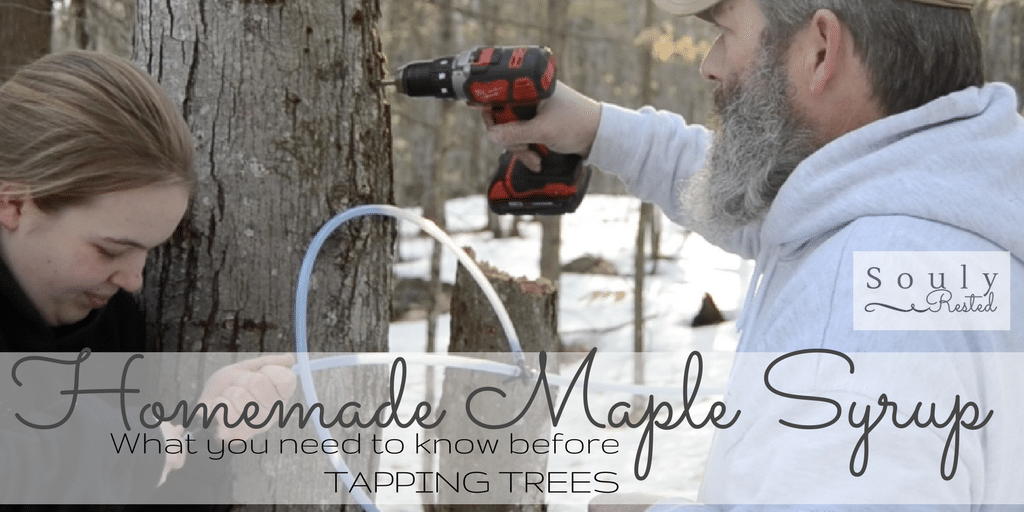
Before we dive into this together, I wanted to ask if you’d please consider helping me support sugarmaking education worldwide with every purchase of the SoulyRested Swag. You’ll find the latest designs right here (like the one I’m wearing here) .
Throughout February, fresh snow graces the ground most days on our homestead, offering a new white cloak to our tired old, red cape that sits in the woods that border a small lake in our diminutive neck of the woods. Our old farm house is nestled at the neck of the lake, where the dam allows her to slowly empty her ice cold freshness into the river. From there she rolls her icy fingers over the bolders and around the bends that snake through our tiny, rural town.

On long, cold February days, our usually-free-ranging ducks and chicks stay close to home, hopping in and out of their coop door and pecking around in the little covered area right outside their coop, which is also home to our little duck house.
Scout, my daughter’s sweet holstein, is a little harder to spot in her field.
We keep a toasty fire going. And we start to run sap lines, dreaming of homemade maple syrup.
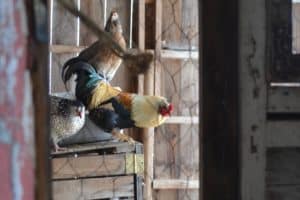

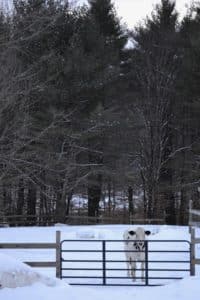
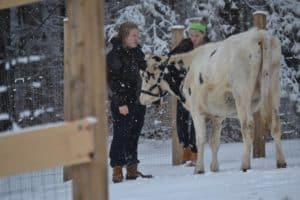
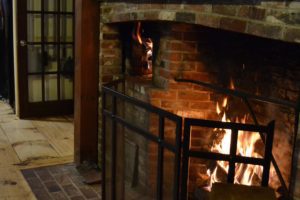
Take a Second to Save These Posts for Later
I know I come across helpful pointers online all the time that I plan on coming back to, only to realize later that I didn’t save the information, or I saved it but don’t remember where I saved it. So I wanted to save you the 20-minute heartache of floundering around for this muli-part DIY syrup series when you need it. You can PIN each post right here, then keep reading…
PIN Part 1, about identifying and marking your trees in the fall and gathering some of your preliminary supplies
PIN this post (part 2), about when, where, and how to drill your taps. This post also covers how to know if you live where you can tap successfully and 7 questions you need to know the answers to before you tap your trees.
PIN Part 3, about a reverse osmosis filter–what it is, how to build one yourself, and how it can save you hundreds a year in your backyard syrup making process.
PIN Part 4, the step-by-step guide to boiling your sap. This posts walks you through every important detail you need to know when processing your syrup, from tree to pancake.
PIN Part 5, a guide to knowing the perfect time to stop tapping your maple trees. (Don’t make the mistake that I did and assume you should keep on tapping until the sap stops flowing.)
PIN Part 6, a guide to help you ID maple trees, in every season. (Or read it here.)
Or, if you’d like to know how to make a very different kind of syrup–read my post How to Make Lilac Syrup–or PIN it for later too.
Or, best of all, if you want to make sure you see everything I’ve ever written, or ever will write, on my blog about maple syrup, be sure to follow my Pinterest Board on that very topic.
Be sure to follow along here–by typing your email into the box at the end of this post. You’ll be able to download the 33-page preview e-booklet as soon as you sign up. Even better, read all the way to the end of this post for a fabulous 15-page eBook you can download immediately, right here.(See the end of this post for all the details.)
Time for Homemade Maple Syrup
All of a sudden, silently and without fanfare, the sweet water starts dancing through the trees, and dreams of maple sugar start filling our thoughts.
We knew the dance would start unannounced, and we needed to be prepared. Last year was our first attempt at collecting sap and making homemade maple syrup. We started pretty small. This year, we wanted to expand the process and hopefully make less mistakes. So far, we’re not doing so well (at least about limiting our margin of errors). . . But first, I’ll explain our collecting process last year.
A Few Mistakes Last Year
Last February, we tapped about a dozen trees. I envisioned the quaint tin buckets hanging from silver spouts here and there throughout our woods. That was my first mistake. Turns out those quaint options are much more expensive and not nearly as practical as good-old food-grade plastic buckets. Good thing my pragmatic husband took on the job of picking up our supplies.
– Disclosure: This post contains affiliate links. –
Then I thought if we were just gonna use “ugly” buckets, why not clean out milk jugs to use for free collection containers? That was my second mistake. Tiny jugs would have wound up wasting gallons of precious sap a day on the good days. On our best days last year, we had to empty the 5-gallon buckets half way through the day or they would overflow.
We simply drilled a hole (read on for all the details on tapping), attached tubing to the taps, and ran the tubing into lidded buckets at the base of the trees. Then we just had to empty the buckets when they were full, store the sap somewhere cool until we were ready to boil it (we used extra buckets and a giant cooler for storage), and then cart the syrup to our propane-fired cooking pot when we were ready to boil some down.
It pretty much took us all day to boil it down and would foam up if we ever decided to leave it unattended for long, so it can be a pretty demanding effort. (Be sure to read next week’s post about what we learned this year that enabled us to cut in half the time and money required to boil down the sap.)

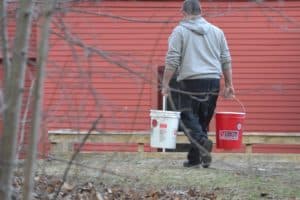
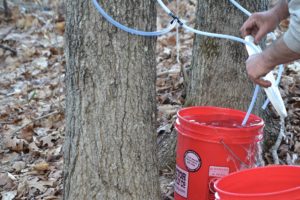
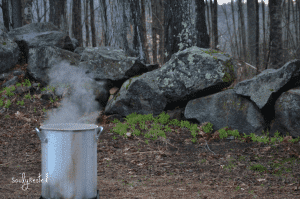
The bucket transportation was cumbersome when more than a dozen buckets had to be carted around at one time. And (probably because we didn’t feel like doing all that cumbersome lugging) we didn’t always check the buckets every day, which led to us occasionally wasting precious sap when it overflowed. That was a huge mistake. We let the sap sit in buckets in the sun in rather warm temperatures a few days in a row, and we had to throw away lots more precious sap.
If the sap gets warm while you’re storing it, it will turn cloudy. Because sap is basically sugar water, it is a perfect home for bacterial growth.
We of course made lots of mistakes processing the sap too, but I’ll cover that in my next post.
And a Few More Mistakes This Year
Fast forward to this winter. In early February, we knew that soon the days would warm up just enough for the sap to decide to slow dance down down the phloem.
We also knew that if we’re smart enough to tap into the right trees, at the right place, in the right way, we can became a part of the beautifully tasty dance. Read an earlier post about choosing the right trees and identifying and marking them. Finally, we knew we had new (free) collection tanks at our disposal this year, so we decided to forgo the daily rounding up and awkward necessary carting of heavy buckets in exchange for tubing that, once installed, would let us gather much more sap with almost no effort.
Knowing the sap would surprise us and start flowing suddenly, almost unexpectedly, we started running our collection tubing the second Saturday in February. A big snow storm was in the works for all weekend, so we weathered the beginning of the snowfall to get as much tubing up as we could. My husband, a daughter, my always-by-my-side labradoodle (Bixby), and I were excited to run our first sap lines.
Although Bixby did have more energy to run full speed through the foot of snow on the ground than we did.
We ran a main line down the wide path that runs up the back of our property (for that we used 3/4″ tubing). Our property stretches uphill through the woods, so gravity is completely in our favor. We planned to have the tubing ending in large greenhouse water collection tanks not too far from our barn (you can barely see the red barn in the last picture, below, to the right, through the trees).
Fortunately, we were “inheriting” the tanks. Unfortunately, the two 80-gallon tanks are currently 400 miles south of our homestead. Until we can make the trek to pick them up, we planned on atleast having the tubing up and taps installed by mid-February.
Then another 15 inches of snow dropped in the next 24 hours after we started working and kept us from getting to our tubes and completing installation. In fact, it’s still a work in progress now, two weeks later.
And we’re still tankless, so we have tubes from numerous trees all collecting into 5-gallon buckets that we need to inspect and empty a few times a day right now.
Hopefully in the weeks ahead I’ll have much more exciting progress to report. But for now, scroll down for the low down on when, where, and how to tap your trees.
If you’d love to make syrup but don’t have a grove of sugar maples, check out this list I’ve put together, after many years of research, of 31 trees that can be used for sugarmaking.
Enjoy lots of maple yumminess right away.
Sorry if that heading made you think there was some super easy, super quick way to make a batch of maple syrup in your backyard. It doesn’t work that way, but that’s okay because the fact that simple joys, like delicious all-natural sugar, take hard work makes us appreciate them even more.
Meanwhile, if you’d like to know the best place to purchase maple syrup–or maple cotton candy, maple cream, maple sugar, single-serving, to-go-packets of syrup, and lots more deliciousness, go check out my friend Tim’s maple amazingness right here, or just click the image below.
>>>>>>><<<<<<<<<<
I’d love to share with you my recipe for a homemade electrolyte-filled drink made with maple sap (or plain water)! It’s just one of many awesome resources in my subscriber library. Share your email with me below, and you’ll have immediate access to the full resource library.
>>>>>>>>>><<<<<<<<<
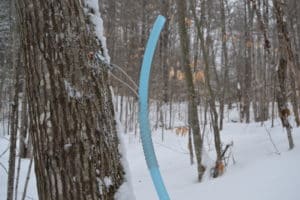
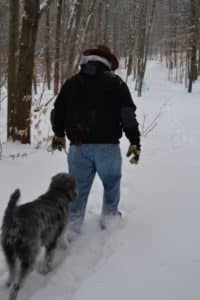
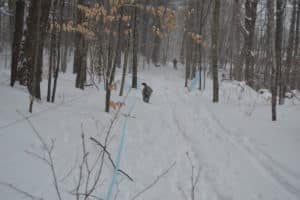
7 Questions You Should Know the Answers to Before You Tap Trees and Make Homemade Maple Syrup
1–> Where can you live in the world and tap trees for syrup?
Getting productive amounts of sap from trees is not really based on what continent you’re on or what latitude you reside at as much on your seasonal weather. If you live in a part of the world that has a seasonal freeze/thaw cycle, you can be a syrup and sugar maker. (Even if you have trees other than maple trees! But more about that in a future post.)
2–> When should you tap?
Alternating freezing and thawing temperatures are necessary to create a pressure in the tree, which causes the sap to flow when you tap into it. Sap runs best when temperatures drop below freezing at night and rise into the 40s during the day.
Not only for optimal sap flow, but also for the health of the tree, you’re best to patiently wait until temps are at least slightly above freezing on the day you do your tapping.
I write more about this topic, and share an informative video, right here.
3–>What part of the sapwood should you tap into?
The most important thing of all when placing taps is to notice the quality of the wood that you’re tapping into. No matter how perfectly you do everything else, you’ll simply never have any quantity of sap if you’re drilling into poor quality wood. You want to tap into clear, white sapwood. To know if you’ve chosen a good quality of sapwood, simply notice the whiteness of your shavings as you pull your drill out of your tree.
4–> Should taps be installed at an angle?
To be sure you have a perfectly circular hole and to avoid air leaks around your taps, you’ll want to carefully drill straight into the tree. Yet it’s best to err on the side of a very slightly upward angle, so if your hole isn’t perfectly straight, at least sap can naturally flow in the direction you want it to be flowing.
5–>How deep should you place taps?
You’ll want to, when possible, place taps on the north side of a tree and keep your tap holes about 1.5″ deep.
6–>What number of taps should you install on each tree?
Judge how many taps to install in a tree based on the tree’s size. A tree 10-20 inches in diameter should only have 1 tap. You can insert two taps if the tree is 21-27 inches in diameter. And over 27-inch diameters can host 3 taps.
7–>Should you even bother if you only have one or two trees to tap?
Yes! Go for it! You most likely won’t harvest enough sap to make much syrup, but you’ll love drinking your sap. Even if you’re only able to collect a few cups of sap, it’s a fantastic experience.
I’m often asked how much sap you need to make a jar of syrup. The truth is, there is no set answer to that question. It depends on what kind of tree you’re tapping and when in the sugar season you’re tapping, beginning or end. There are many factors that affect the amount of sugar in any one gallon of sap. But in general, the last few years here on our homestead, we’ve found that to make a small mason jar full of syrup (a pint, or 2 cups of syrup), we collect 5 gallons of maple sap.
Then there’s the question of how long does it take for one tree to produce a gallon of sap in your bucket. And there’s really no correct answer to that question either because the variables are almost too many to count. From type and age of tree, to the quality of the wood, to the direction of the wind, to the amount of sun on any given day… everything affects the outcome. But we did learn to never assume that a large tree will produce a large amount of syrup.
But regardless of if your one tree will produce enough sap to make syrup, it’s worth tapping just one tree to enjoy the maple water! Drinking ice cold water, with a hint of sweetness (maple sap is 98% water, 2% sugar), that’s been filtered through your tree, is exhilarating, not to mention good for you. Maple sap is bursting with antioxidants, minerals, enzymes, and phenolic compounds. (Phenolic compounds are natural compounds that have been proven to be anti-inflammatory and even cancer-preventative.)
Of course it’s nowhere near the same as harvesting your own, but you can also buy maple water.
So, what can you learn from our mistakes?
- You can never start installing your sap lines too early. Seriously, January is best. (Not for tapping the trees, you need to be more patient for that, but we could have had all our main, 3/4″ line installed in January so we were ready as soon as the conditions were right for tapping.)
- You need to have your collection tanks ready by January too (not 400 miles away). You just never know when a few crazy warm days may show their head even as early as the beginning of February.
- You can’t beat the old-fashioned DIY cutting and wrapping of wire to attach your tubing. This short video shows you the original way we attached our tubing. We were changing it just a few weeks later, so now it looks like this:
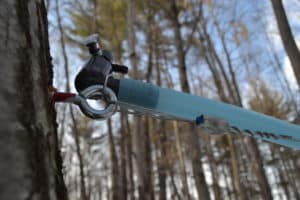
It’s been a messy, difficult winter.
As I get ready to post this today, our first batch of sap, which we ran through the reverse osmosis (RO) filters last night, is boiling into sap. (I’ll give you full directions on how we made our RO filter in my next post.)
Our kitchen smells wonderful, and the syrup is a beautiful, deep auburn, sweet product coming out of a cold, muddy, messy day. While over a foot of snow remains in shaded areas of the woods, temperatures in the 50s for multiple days have left muddy icy piles in sunny areas of our fields.
As I surveyed the icy, muddy mess this afternoon around the propane heater and our big pot of sap in our backyard, I thought about how my own life has been messy and difficult this winter.
Yet God chooses to display his splendor in the maple tree and in our seasons of hardship.
The maple tree is a planting of the Lord as a practical, tasty picture of his provision. Maple syrup reminds us of his grace and his creative ingenuity, choosing to provide a tasty byproduct from the simple sap of a tree.
Don’t get me wrong, no one promises that syrup making will be easy. It’s downright difficult and pretty messy sometimes.
My last few months–with the unexpected loss of both parents only weeks apart–were pretty messy, but through the loss and pain God is planting glimpses of his splendor. Day by day he’s easing my despair, and bit by bit he’s soothing my mourning, replacing despair with praise and mourning with joy.
He has sent me to bind up the brokenhearted…
to comfort all who mourn, and provide for those who grieve—
to bestow on them… the oil of joy instead of mourning,
and a garment of praise instead of a spirit of despair.
They will be called oaks of righteousness, a planting of the Lord for the display of his splendor.
Isaiah 61:1b-3
Pouring delicious fresh maple syrup on my French toast tomorrow will be an added bonus. (I share my recipe for amazing French toast like you’ve never had before right here.)
Remember, if you’d like full directions for making your own homemade electrolyte-filled maple drink right now, just sign up below for my weekly newsletter. I will immediately send you access to my full resource library, including a recipe for this amazing nutrient-rich maple drink.
v v v v v v v v v v v v v v v v
Please follow along!
Please take a second to follow along here on SoulyRested to catch up on a few of my memorable mishaps, discover fascinating things about my centuries-old farmhouse, glean a little parenting/homeschooling insight from this momma who’s been failing at the effort for almost 2 decades, or enjoy the inside scoop on the secrets other legit homesteaders might not tell you.
I hope my focus always encourages you, because simple joys require hard work. Let’s face it, we all need all the encouragement we can get! As soon as you subscribe (in the box at the end of this post), you’ll have immediate access to my Resource Library, which includes many useful printables, including helpful ones related to backyard maple syrup. And, destined to be the most popular item in my Resource Library–A SWEET TASTE–this giant, full-color, 5-chapter, 33-page eBook is my gift to you… 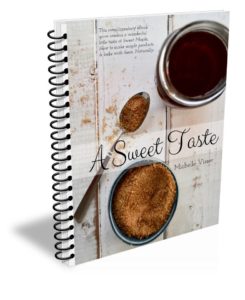
Your FREE copy of A Sweet Taste includes:
— 8 Questions everyone should ask before they tap trees.
— Amazing recipes using all-natural maple syrup.
— Numerous reasons that maple should be your favorite sweetener.
— A long list of what makes sugar maples so special.
Glance at my Resource Page if you’d like to get a glimpse of all the supplies I use and recommend for everything from gardening, to homeschooling, to chicken care, to nature journaling, to–of course–maple syrup making.
I’d love to connect!
To find me in some other neck of the woods, just click any (or every!) icon below:
More information you’ll want to know about Maple Syrup Making:
How to Know the Perfect Time to Tap
How backyard sugarmakers save hundreds of dollars every year
Learn how to BAKE with maple syrup!
Pin this for later!
Just click this image to pin this article.–>
Don’t forget to subscribe for access to my Resource Library. There you’ll find my FREE EBOOK–A Sweet Taste–as well as amazing recipes for things like whoopie pie cookies, maple sap switchel, and Grandmom’s perfect pie crust.
Heck, before you even scroll down and subscribe, I have a free eBook for you. Download Maple Goodness here or just click on the eBook image below. Your family will truly love the Best Ever Maple Scone recipe in this free eBook.
Then type your email address in the box below for the 33-page eBook, A Sweet Taste, and so much more.
v v v v v v v v v v v
v v v v v v v v v v v

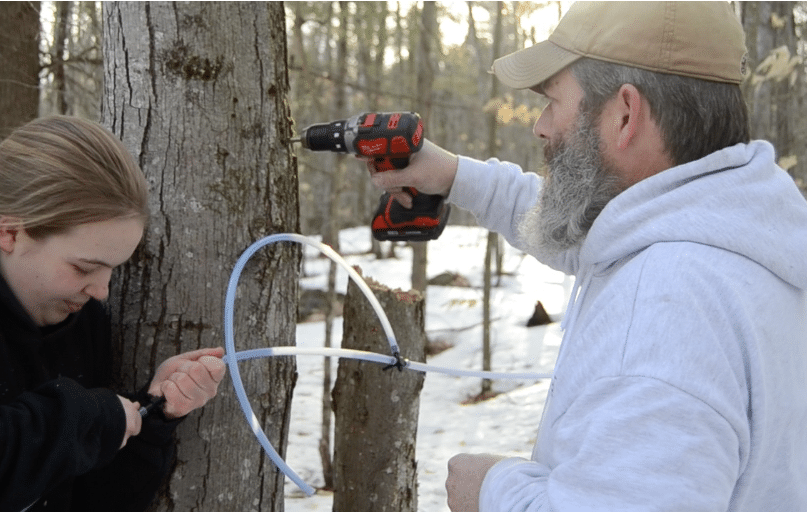
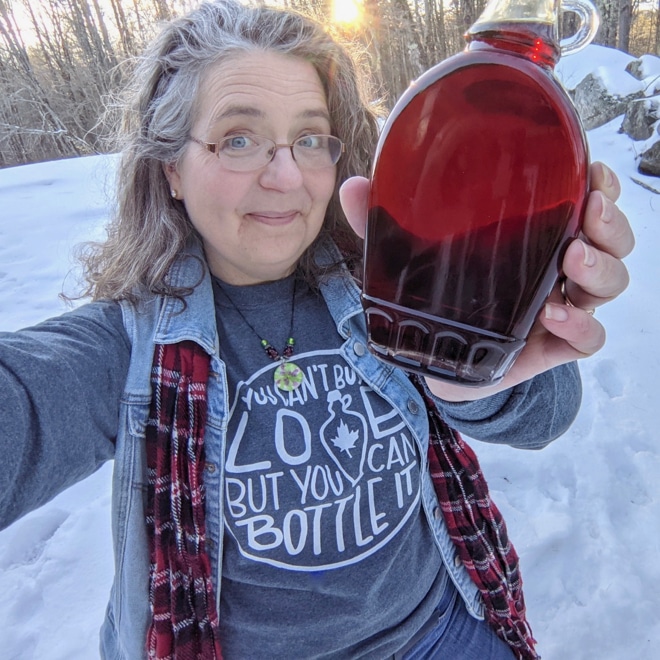

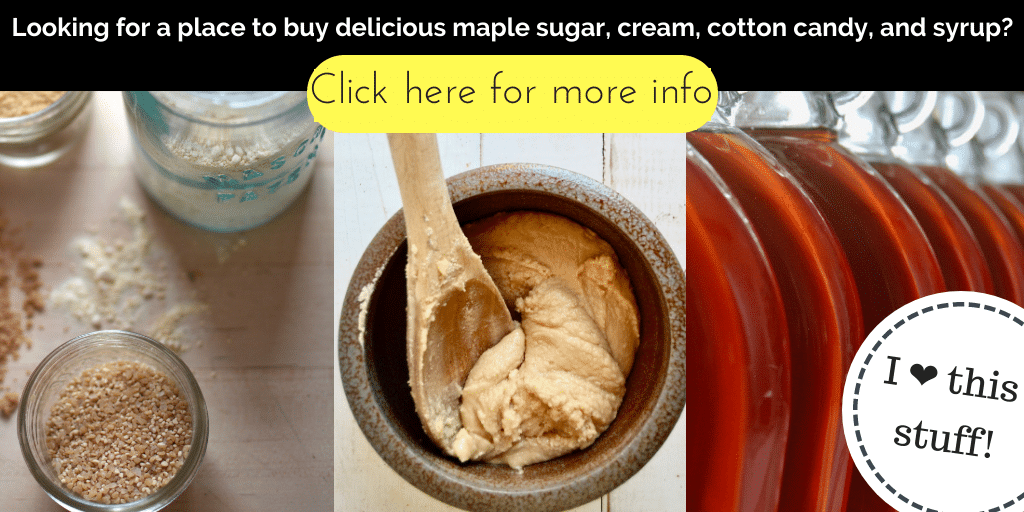






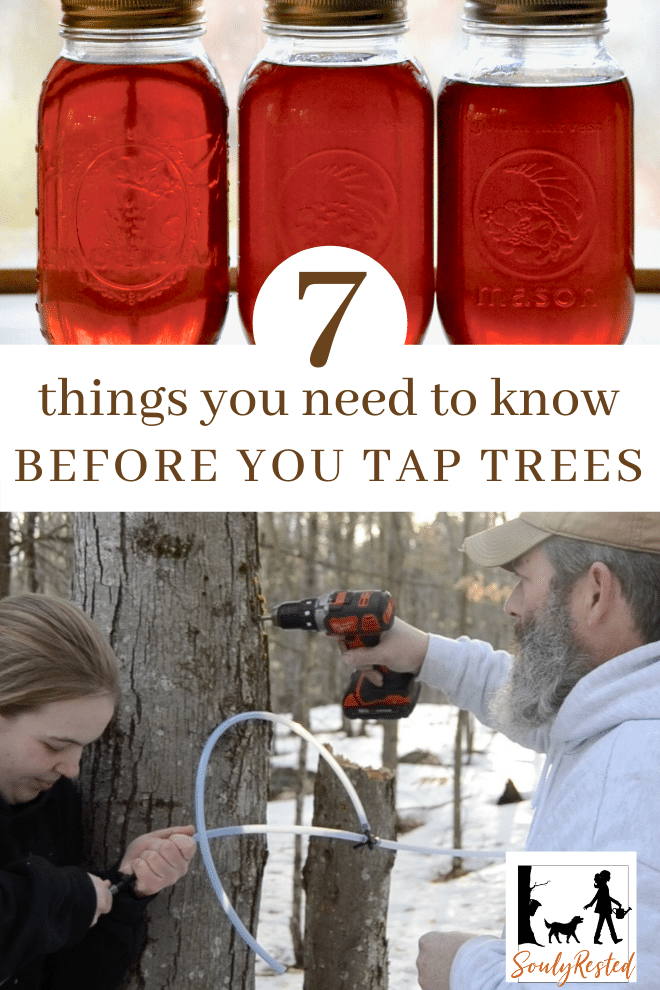
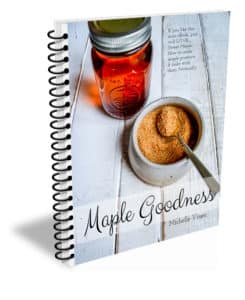

I have one single silver maple tree and we’re at the southern end of the Texas panhandle. It’s been said by the man who trimmed and saved it when it had carpenter ants in the past that they don’t usually survive here so ours with almost a 2ft diameter trunk has fought to make it here. I was looking at the temperature requirements for tapping and I never could find a time that seemed right. We go from highs in the 50’s one week to a day or 2 in the 70’s and then 2 or 3 days in the 40’s. It never is very consistent. It also didn’t always get below freezing every night. Does it need to be more consistent? It is almost always this wild from day to day except in the blast of summer. We’re also about to move so I won’t have this big tree anymore. I just wanted to make enough for us to say hey, we’ve had maple from our own tree but at 5 gal to get a pint, I wonder if with our weather we’d even get a Tbsp…. any advice would be appreciated.
Hi Connie. While you may not get enough sap to make a full jar of syrup, you may get a few cups full to enjoy drinking, if nothing else. It’s delicious to drink straight from the tree. Cool filtered water that is LOADED with antioxidants. If you get even more than a few cups but not 5 gallons, you could try making Maple Switchel (the recipe is in my Resource Library), which is a natural kind of Gatorade. I would absolutely put a few taps in your beloved tree this winter, before you move, and check your bucket on those days that you went below freezing at night and up to the 40s in the day. Just a few days in a row of those conditions very well may offer you some delicious sap.
Wonderful article and photos. Well done!